Newsletter: I tried a sleeping pod at UCLA’s new commuter student hub
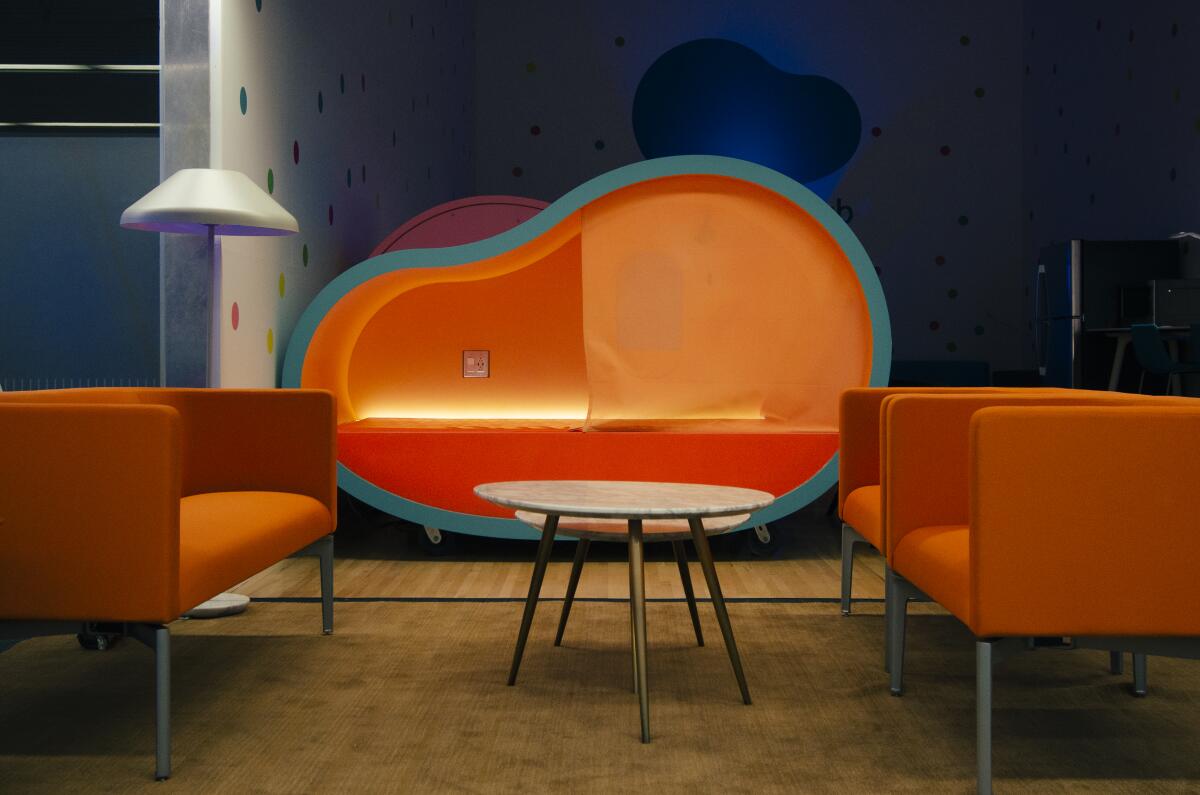
It’s been a week, and I may need to soothe my soul with a massive homemade grape Pop-Tart. I’m Carolina A. Miranda, arts and urban design columnist at the Los Angeles Times, with your weekly essential arts newsletter.
Designing for campus commuters
The platonic ideal of university campus design generally includes classroom buildings, an auditorium, a green space, some sort of bell tower and plenty of dorms. In fact, dorm life and university life are often conflated as one. But the reality for countless students on university campuses is that they commute. And in Southern California, those commutes can be very long.
At UCLA, for example, more than half of the undergraduate student body commutes from off-campus. In addition, a 2019 survey titled “My Commute Is Hell” by the university’s urbanism think tank cityLAB found that 43% of commuting students had one-way commutes of 60 minutes or more, and of those students, 42% had slept overnight on or near campus rather than endure the long ride back home late at night. For some students, that entailed sleeping in their cars.
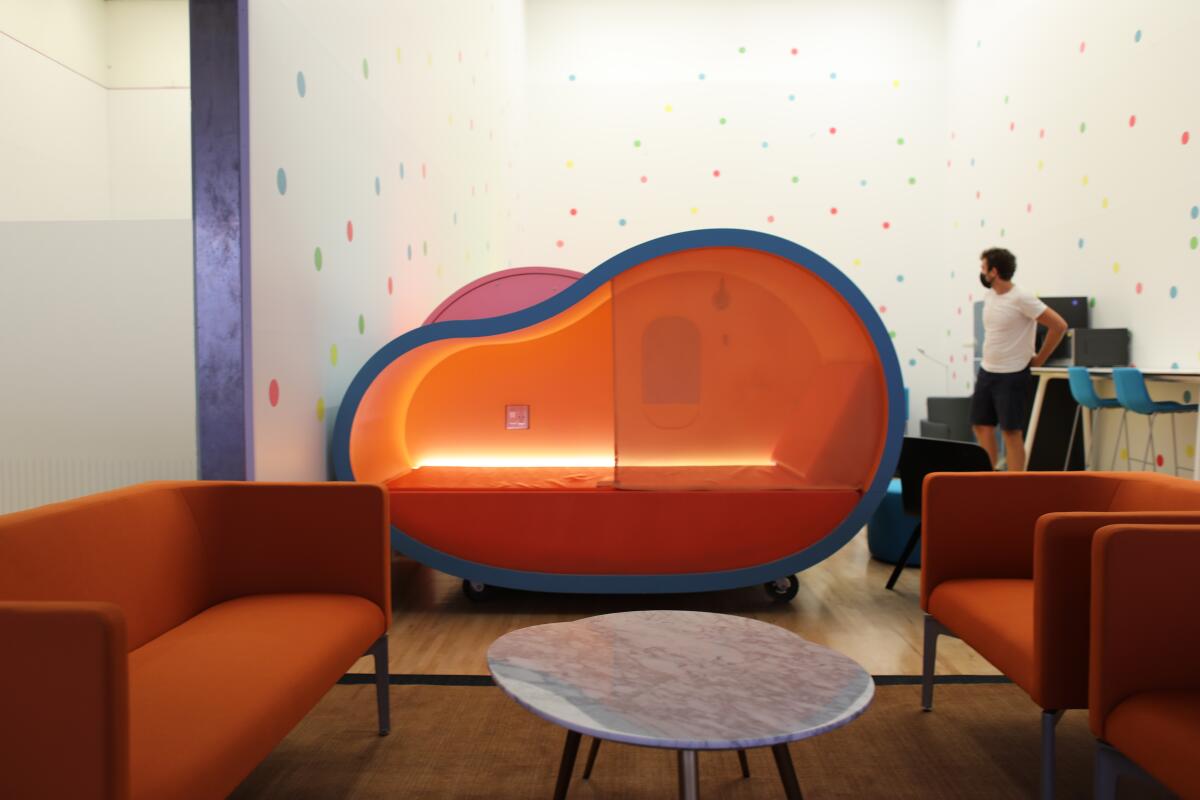
Historically, commuting students have improvised hangout spaces on campus for the long hours between classes — in libraries, student centers or other public areas. But over the last several years, campuses have begun to set aside dedicated spaces to accommodate commuting students who may find themselves stuck on campus for hours at a time.
The University of San Diego has a dedicated lounge with couches and a kitchenette where students can store and reheat food. UC Irvine is currently putting the finishing touches on a similar space.
Make the most of L.A.
Get our guide to events and happenings in the SoCal arts scene. In your inbox once a week.
You may occasionally receive promotional content from the Los Angeles Times.
And late last month, UCLA unveiled a new commuter space called BruinHub. It not only provides commuting students a dedicated space to store food and hang out, but it also provides futuristic-looking, jelly-bean-shaped pods for naps. These can be reserved at no charge for two-hour stretches and even overnight. Located inside what was once a racquetball court in the John Wooden Center, the campus recreation building, the hub has good proximity to showers as well.
Dana Cuff, who serves as director of cityLAB, which was instrumental in conducting research on student commutes and designing the spaces, says BruinHub adds to the “continuum of accommodation” that the university can provide. For students who, for economic or personal reasons, cannot live on campus or just off of it (Westwood is one of the most expensive neighborhoods in Los Angeles), BruinHub can provide a safe and comfortable anchor space.
The space is small — containing just five sleeping pods and a small lounge and desk area — but it provides a place to test out designs and receive student feedback. “This is a prototype, not a solution,” says Cuff.
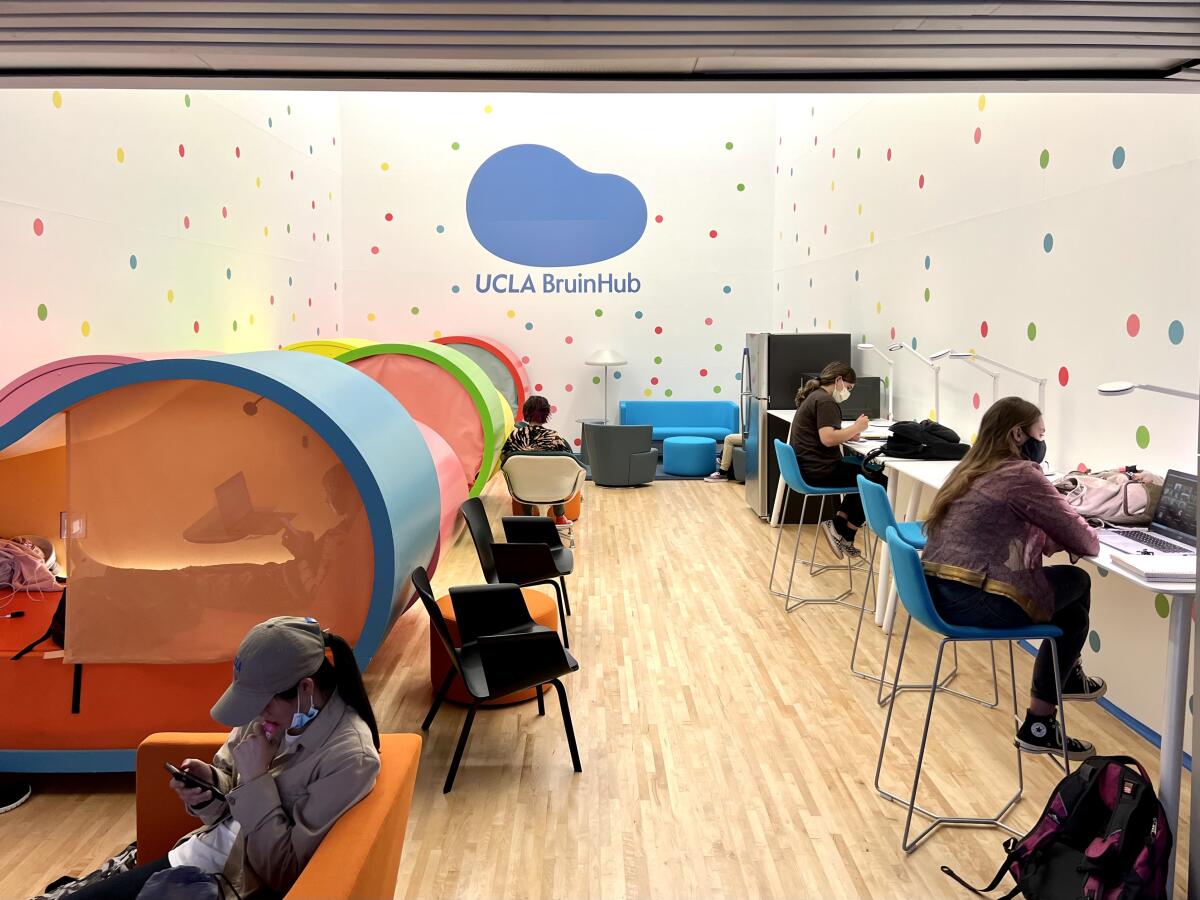
The project is a collaboration between cityLAB and numerous UCLA departments, including UCLA Recreation, UCLA Student Affairs and the student organization Bruin Commuters. But it was the team at cityLAB that worked with commuting students to produce a design that was more appealing than, as Cuff says, “Ikea cots in a closet.”
Its most iconic elements are the jelly-bean-shaped sleeper pods, painted in bright, sherbet-y colors. These were designed by UCLA lecturer Marta Nowak, a founder of the design studio AN.ONYMOUS, in collaboration with the cityLAB team, which also included cityLAB associate director Rayne Laborde and assistant director Gus Wendel, both of whom worked on some of the early research on student commuting.
The pods are crafted out of wood and feature a vinyl-upholstered sleep area that can be easily wiped down between uses. Interior lights provide illumination in case students simply want to kick back and read. A modular pillow can be stood up so you can sit up in the space or turned on its side for sleeping. A small translucent curtain provides a modicum of privacy.
On a recent trip to UCLA, I got to test one out and can report that the pods are functional and very comfortable. In fact, I’d like to officially request one for The Times’ offices when we fully reopen.
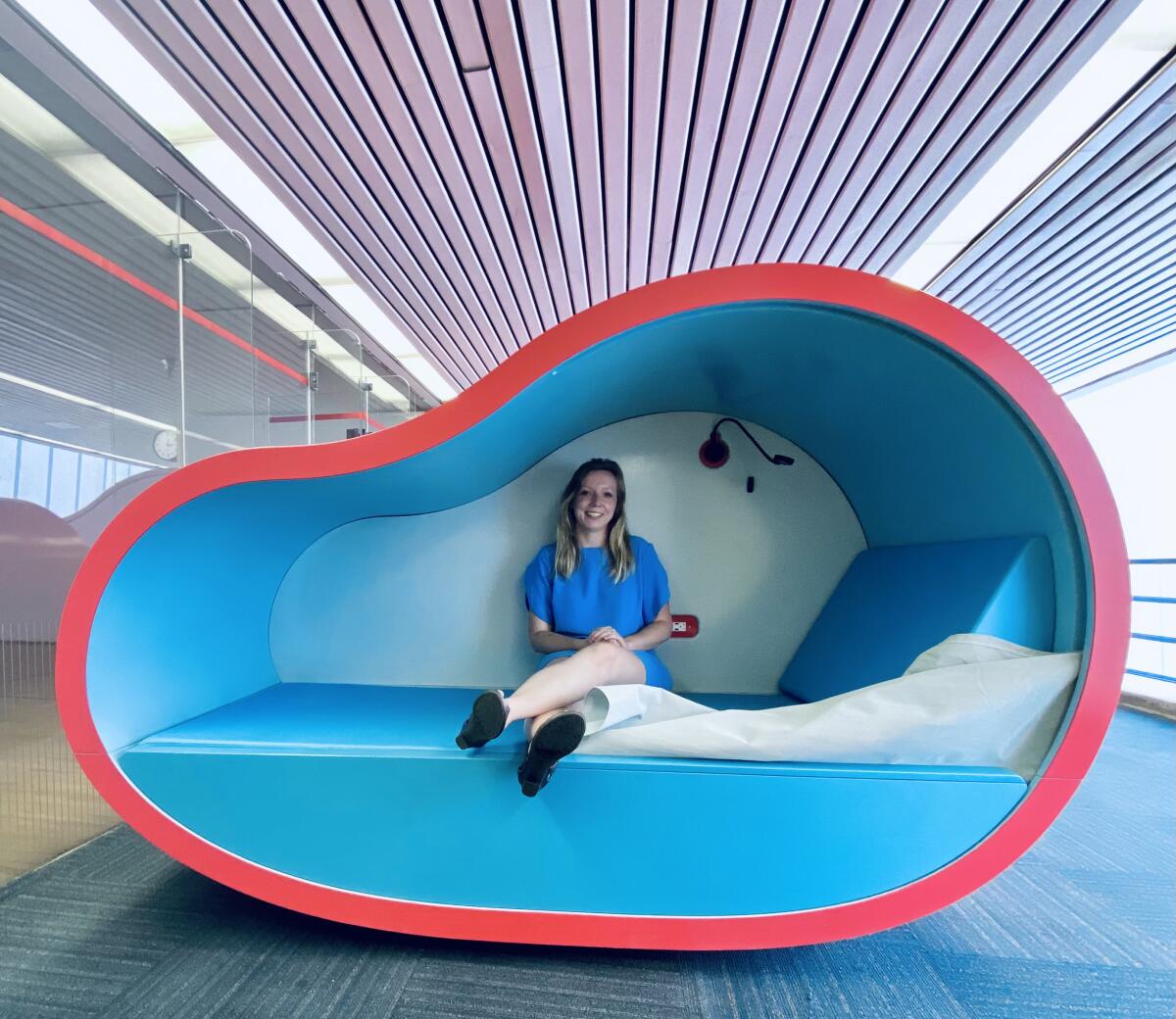
BruinHub is small, but it’s about to get bigger. The cityLAB team currently has five more pods on the way that will inhabit a neighboring space in the recreation center.
On the afternoon I visited, it was being well-used: Two students were crashed out in pods, another was warming up lunch, and yet another was parked at the counter charging a laptop while reading. It’s a space where design is central to the concept rather than being treated as an afterthought.
“This was a case,” says Laborde, “where design really brought people together.”
On and off the stage
The musical “Diana” has landed on Netflix (in advance of its Broadway debut next month), and Times theater critic Charles McNulty is not a fan. “For those encountering this theme park musical for the first time, it might strain credulity to hear that the show has actually improved. But the fundamental flaw of ‘Diana’ — the glaring disconnect between story and score — remains unchanged by these cosmetic refinements.”
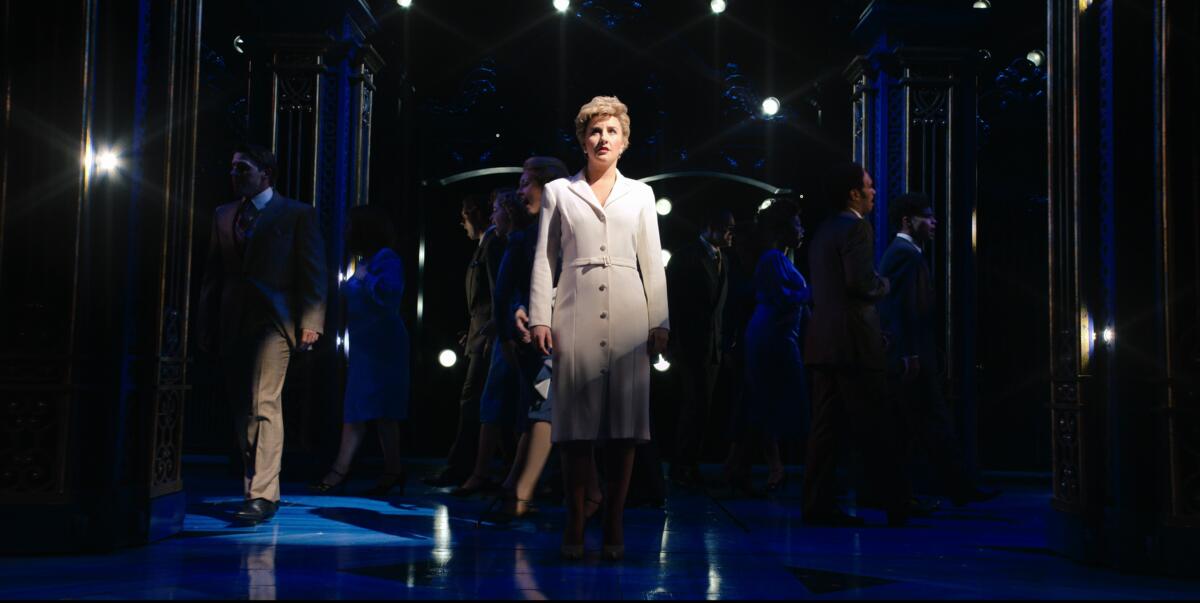
Last week, the Center Theatre Group announced its upcoming season and, although the lineup includes an array of artists of color, it appears CTG forgot about the women. Only one work by a woman made the lineup, Pearl Cleage‘s 1995 play “Blues for an Alabama Sky.” This led Jeremy O. Harris, the author of “Slave Play,” which was to open the Mark Taper‘s season, to threaten to withdraw his work.
McNulty writes that this oversight is part of a pattern at the Center Theater Group. “Works by women hardly ever seem to be given the benefit of the doubt, even as the most erratic male playwrights are offered chance after chance, in a vicious circle that rewards established figures for being established.”
Museum report
The Getty Center may have served as a set for the 2013 “Star Trek” film “Into Darkness,” but it’s the Skirball that is presenting the exhibition on the low-budget 1960s sci-fi television show that became a global obsession. “Star Trek: Exploring New Worlds” includes original costumes, ship consoles and an interactive station where visitors can “build” an episode.
“At first blush, a Jewish museum mounting a ‘Star Trek’ exhibit might seem random,” writes contributor Tim Greiving. “But the Jewish themes and values — not to mention creatives and cast — in this expansive universe of TV shows and films have been a rich field of study for the 55 years since the original series premiered.”
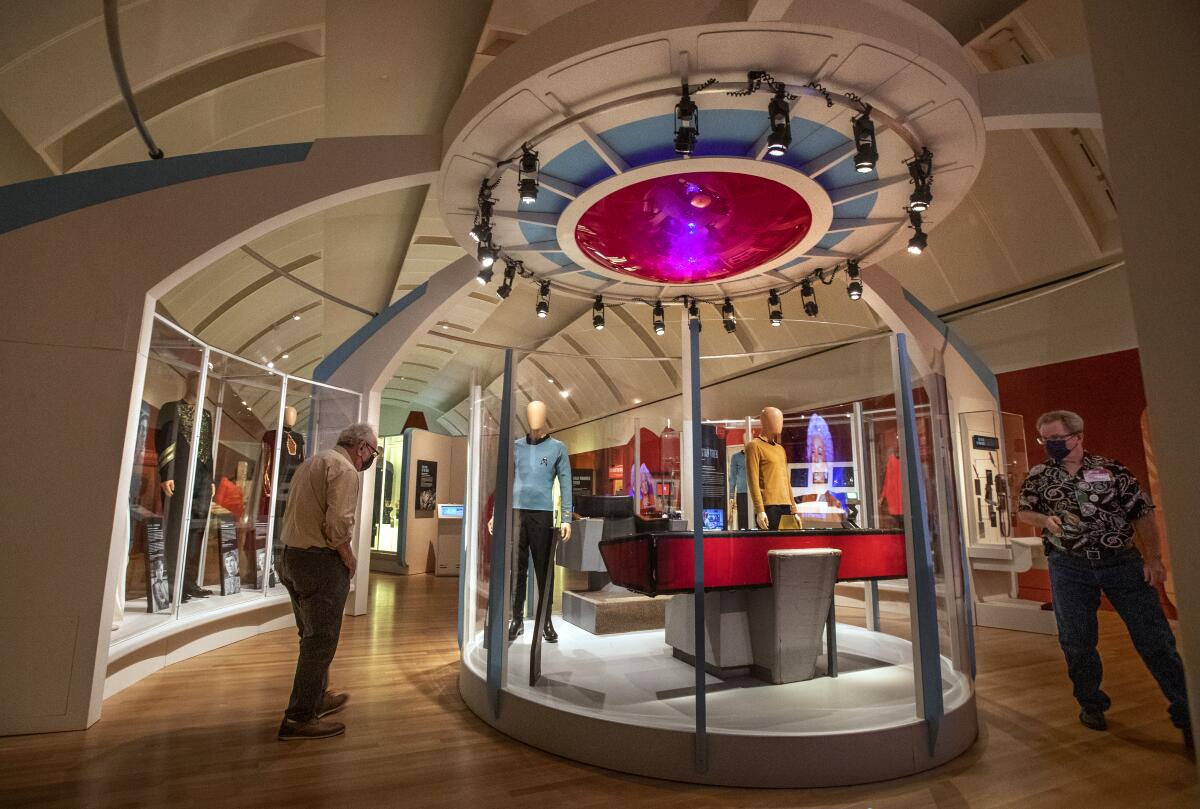
The Holocaust Museum LA is almost doubling its footprint with a new expansion designed by Belzberg Architects, which will add 22,000 square feet of new facilities, including learning areas, a 200-seat theater and a 2,500-square-foot gallery exclusively for temporary exhibitions — and raise the profile of a building that is partly buried into the landscape. “We want to catch people’s eyes,” says museum Chief Executive Beth Kean. “We want it to be a striking museum and an iconic landmark. We don’t want it to be hard to find.”
When OCMA opens at its new Morphosis-designed building in Costa Mesa in 2022, admission will be free, reports Sarah Mosqueda.
Enjoying this newsletter? Consider subscribing to the Los Angeles Times
Your support helps us deliver the news that matters most. Become a subscriber.
Curbed’s Alissa Walker and Justin Davidson talk design and the Academy Museum. And independent architecture critic Mimi Zeiger writes a review of the building for the Architect’s Newspaper: “Incidents, ideologies and cultural shifts over the past few years — social uprisings, pandemic politics, ‘Netflix and chill’ — have dissolved any illusion that one bubble can unite everyone.”
The L.A. City Council approved an ordinance on Wednesday requiring proof of vaccination against COVID-19 at all indoor venues, and naturally this includes museums. The Times’ Deborah Vankin looks at how institutions will manage the new rule.
Only in L.A.
A silent-movie theater that contains a life-size diorama of an Arctic trading post, a tropical garden and a site in which to present 360-degree paintings. Welcome to the delightfully odd Velaslavasay Panorama in University Park. The Times’ Deborah Netburn sat down with Sara Velas, who launched the project more than two decades ago. Velas sees it as one of L.A.’s “creative folk art environments where things are built with an internal logic of their own, but it is hard to explain exactly what that logic really is.”
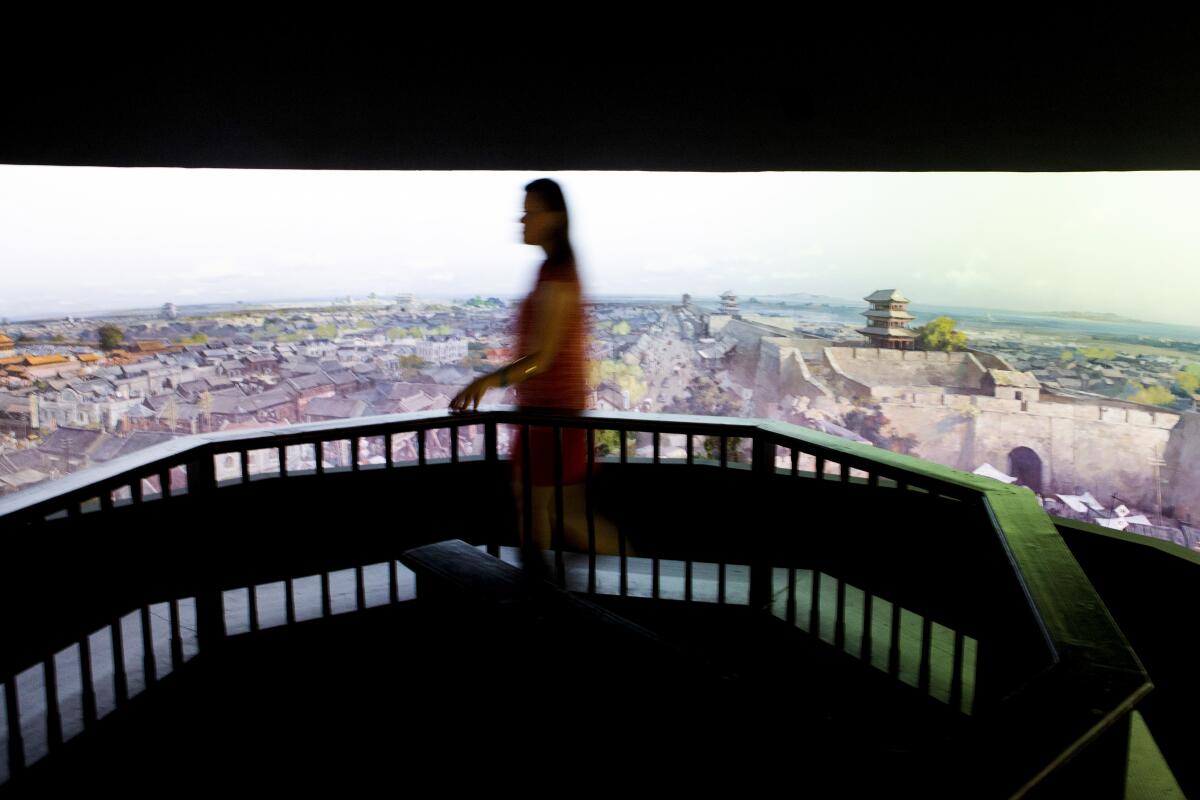
Speaking of odd: Patt Morrison on L.A.’s oddball flag.
Essential happenings
It is an excellent time to pop into 1700 S. Santa Fe, the old light industrial building near the corner of Santa Fe and Olympic in downtown that has, over the last couple of years, turned into a highly convenient destination to see art.
At Vielmetter Los Angeles on the ground floor, artist Andrea Bowers has a solo show titled “Energy With Intention,” which features a series of meticulously produced larger-than-life drawings on cardboard that capture women practicing martial arts (and channeling my middle-aged-lady rage), as well as a show of collages by Deborah Roberts, “O’ Say Can’t You See,” which shows the artist working at a larger scale and seamlessly fusing painting and found images.
A show by painter Devin B. Johnson, “My Heart Cries, I Set Out an Offering for You,” occupies the two gallery spaces that make up Nicodim Gallery on the ground and fourth floors. Johnson’s paintings show faded figures hovering in in-between states, with details of larger canvases highlighted by a smaller, similar work nearby. On the fourth floor, you’ll also find an intriguing show of painted figures — painting is happening right now! — by February James at Wilding Cran called “(Don’t) Take Me With You.” James thins her paints until the colors bleed, which makes it seem as if her figures might dissolve into the canvas. (Los Angeles magazine has a profile on her.)
Next door, at Gavlak, a solo presentation by Candida Alvarez, “Palimpsest” — her first show in Los Angeles — features atmospheric shapes and colors deeply layered on large-scale canvases. And, in the back, you’ll find a small, must-see piece by Paul Stephen Benjamin titled “Black Is a Color,” which includes the work “God Bless America,” 2016, a wall of televisions that juxtaposes footage of Aretha Franklin singing a lyric from “God Bless America” against Lil Wayne’s “God Bless Amerika,” a song that is far more ironic in tone.
I recently came across Benjamin’s work for the first time in the Virginia Museum of Fine Art’s “Dirty South,” where he used a wall of televisions to riff on Billie Holiday’s “Strange Fruit,” and was bowled over. Glad to see his work land in L.A.
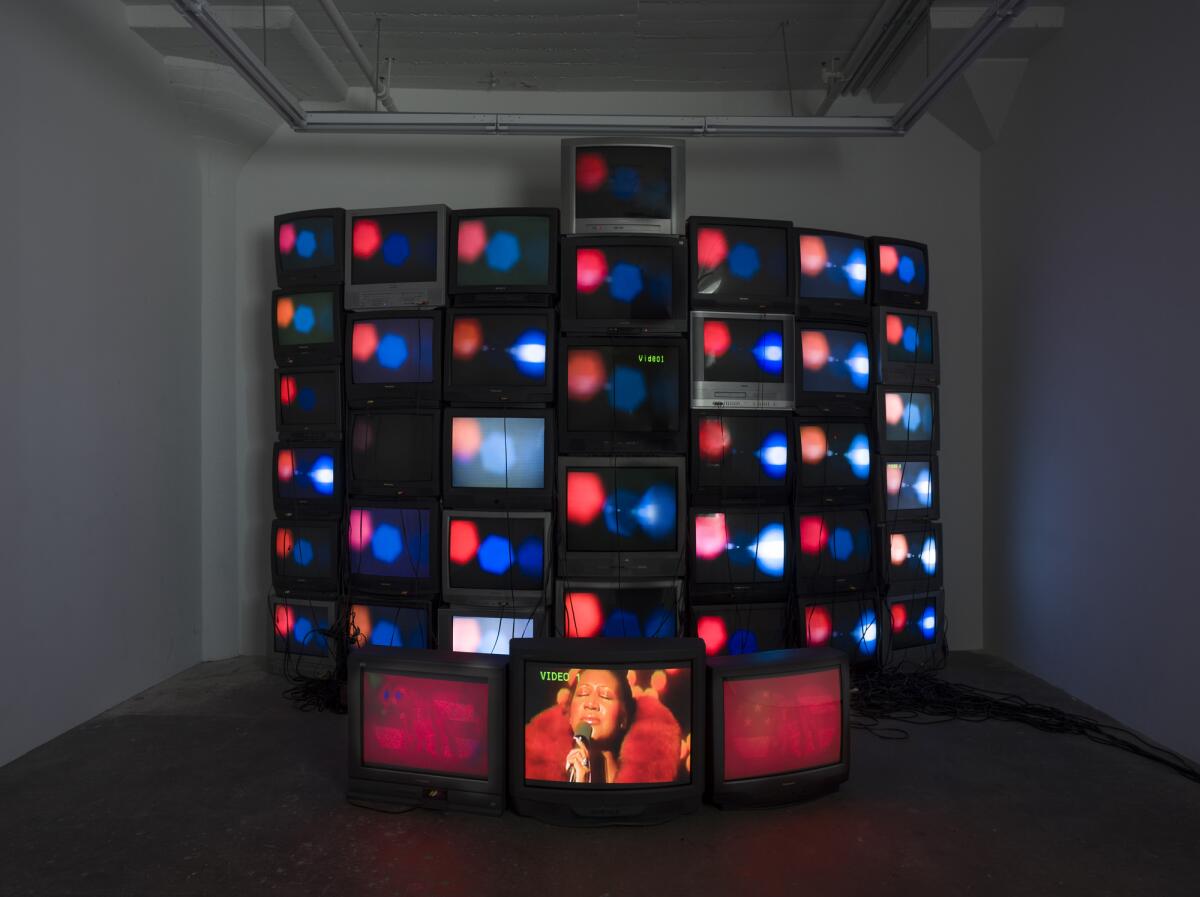
Plus, Matt Cooper rounds up the best bets for the weekend, including a new group show at the Hammer Museum inspired by an important 1992 text by Jamaican theorist Sylvia Wynter that was written in response to reports that the code “No Humans Involved” was once used by the LAPD when discussing crimes affecting marginalized people and people of color.
And if you’re looking for all things ceramics, this weekend is CLAY LA at the Craft Contemporary museum, where designers of all kinds will present and sell their wares.
Passages
Robert Altman, a photojournalist who captured countercultural San Francisco in the late 1960s, later becoming a staff photographer at Rolling Stone, has died at 76.
Pop conceptualist Billy Apple (born Barrie Bates), who made his name a work of art and his art a brand, is dead at 85.
In other news
— Tanzanian writer Abdulrazak Gurnah, whose works illuminate the psychological states of migration, has won the Nobel Prize for literature. He is the sixth African-born writer to win the prize.
— The tenuous position of artists in Kabul.
— Erin L. Thompson‘s summary of all the pillaged works that somehow ended up at D.C.’s Museum of the Bible (founded by Hobby Lobby President Steve Green) is a wonder to behold.
— Tyler Green on how Ralph Waldo Emerson helped define our notions landscape.
— The Denver Art Museum’s Gio Ponti-designed building is about to open to the public after a $150-million renovation and expansion by Machado Silvetti. Looking forward to seeing this.
— Elizabeth Greenspan has a fantastic profile of architect Denise Scott Brown, covering her photography and the ways in which women get written out of architectural history.
— The design phenomenon that is the “book blob.”
— New York’s Guggenheim Museum has a new chairman and its second-ever Black female trustee — it’s Claudia Rankine, in case you’re wondering.
— San Francisco Chronicle food critic Soleil Ho has an interesting essay on the Michelin Guide’s approach to California.
— And The Times’ Daniel Hernandez reports on a podcast that tells the story of reggaeton.
— This profile of Laurie Anderson in advance of her nonretrospective retrospective opening at the Hirshhorn in D.C. will leave you full of wonder.
And last but not least ...
My social media feeds are a combination of Bad Art Friend and Jenny69, and I’m hoping there’s an astrologer who can explain how they are related.
The biggest entertainment stories
Get our big stories about Hollywood, film, television, music, arts, culture and more right in your inbox as soon as they publish.
You may occasionally receive promotional content from the Los Angeles Times.




